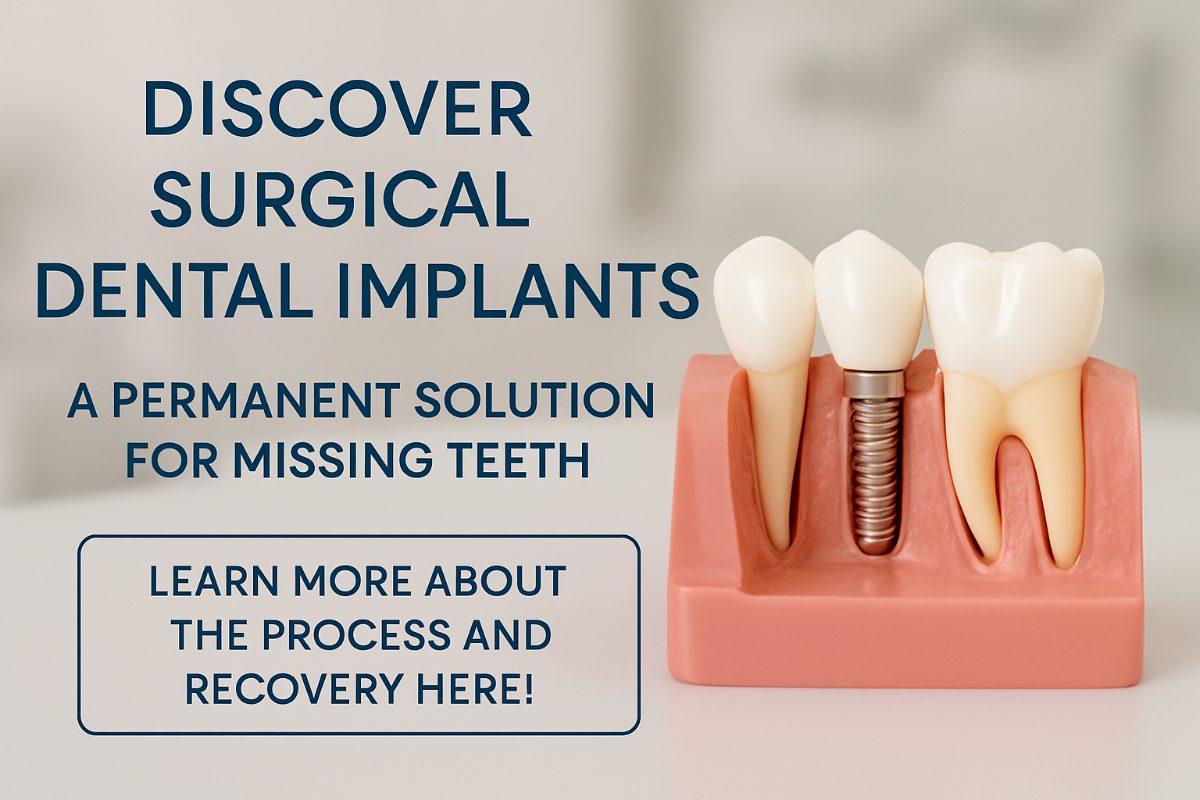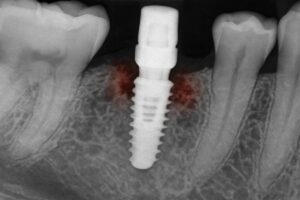If you are missing teeth, unhappy with dentures, or considering a full‑arch replacement, this post explains what to expect from dential implant surgery in Dawson County, Montana. Read on for a plain‑language overview of the steps, healing, costs, and how to start.
This guide covers who makes a good candidate for dential implant surgery in Dawson County, Montana, the step‑by‑step process from consult to final crown, recovery tips, and common costs so you can plan your next move with confidence.
What are surgical dental implants?
Surgical dental implants are titanium posts placed into the jaw to replace missing tooth roots. A crown, bridge, or full arch is attached to the implants to restore chewing, speech, and appearance. Unlike removable dentures or partials, implants are fixed and feel more like natural teeth.
Implants help preserve jawbone by transferring bite forces into the bone, which slows bone loss. That durability and bone preservation make implants a long‑term solution for many people who want better function and a natural look.
Who is a good candidate for dential implant surgery in Dawson County, Montana
Many adults can get implants, but a dental implants dentist will evaluate several factors to decide if surgery is appropriate.
- General health: Conditions like well‑controlled diabetes are usually OK. Serious immune problems or uncontrolled medical issues may need medical clearance.
- Bone requirements: Adequate jawbone volume and density are needed. If bone is thin, bone grafting or other procedures may be recommended before implant placement.
- Lifestyle and medications: Smoking lowers success rates. Certain medications (blood thinners, bisphosphonates) affect timing and planning.
- Alternatives: If implants aren’t a good fit, your dental implants dentist may recommend bridges or improved dentures, or preparatory treatments to make implants possible.
The surgical dental implants process: step-by-step
Consultation and treatment planning
Your first visit includes a medical history review, oral exam, digital X‑rays and often a CBCT scan and intraoral scans (iTero or Trios). The dentist will explain options, expected results, risks, and a timeline. A personalized plan maps implant positions, any grafting needed, and the restoration type.
Implant surgery and placement
Procedures can use local anesthesia with or without nitrous oxide or oral/IV sedation depending on comfort needs. The dentist places implants into the jaw at planned sites. Some patients receive temporary teeth the same day (immediate protocols), while others wait for healing before final restorations.
Local patients receiving dential implant surgery in Dawson County, Montana are usually awake but comfortable during placement and can go home the same day with aftercare instructions.
Healing and osseointegration
After surgery, the implant integrates with bone over several weeks to months — a process called osseointegration. Follow‑up visits check healing. Home care includes gentle rinsing, soft foods, and avoiding heavy chewing on the site until cleared.
Restoration and final crowns
Once implants are integrated, the dentist attaches abutments and takes impressions or digital scans for final crowns, bridges, or full‑arch prostheses. Same‑day crown systems like CEREC® may speed single‑tooth restorations, while full‑arch work may use lab or 3D‑printed prosthetics for the final smile.
Recovery, risks, and what to expect after dential implant surgery in Dawson County, Montana
Common post‑op symptoms include soreness, swelling, and minor bruising for a few days. Pain is manageable with prescribed or over‑the‑counter meds. Stick to soft foods and rest for 48–72 hours, then gradually resume normal activities as advised.
Call your dental implants dentist right away for heavy bleeding, increasing pain, fever, pus, or any sign the implant feels loose — these can be signs of infection or failure and need prompt attention.
Costs, timeline, and financing for dential implant surgery in Dawson County, Montana
Costs depend on the number of implants, need for bone grafts or sinus lifts, the type of final restoration, and use of digital technology. A single implant and crown costs less than full‑arch solutions like All‑on‑4®.
Timeline ranges from a few months for straightforward single implants to several months for complex cases needing grafts. Insurance coverage varies; many plans cover portions of treatment. Financing options often include in‑office plans, third‑party loans, and using HSAs or FSAs.
Sandcreek Dental’s approach to surgical dental implants
Sandcreek Dental in Glendive offers a fully digital workflow for comfortable, precise care. Technologies include CBCT scanning, iTero and Trios intraoral scanners, CEREC® same‑day crown systems, in‑house 3D printing, and sedation options for anxious patients.
Dr. Matthew Calkins and Dr. Nathan Sickler combine advanced training with small‑town patient care to guide you through planning, surgery, and restoration with clear explanations and a focus on comfort.
How to get started with dential implant surgery in Dawson County, Montana
Bring ID, a list of current medications, any medical records, and recent dental X‑rays if you have them. Your first visit includes an exam, scans, and a treatment discussion.
To begin, call Sandcreek Dental to schedule a consultation or request an appointment online. A consult will outline options, costs, and next steps so you can decide with confidence.






